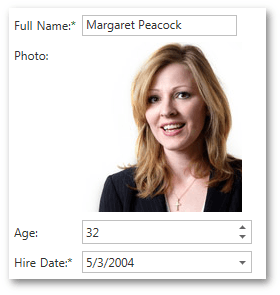Overview
- 2 minutes to read
FormLayout represents a container of items that arranges them in single or multiple rows and columns. You can add layout group containers as children to the FormLayout. A layout group container allows you to arrange its items side-by-side (either vertically or horizontally) or as tabs.
To learn more about FormLayout and see it in action, refer to its online demos.
Implementation Details
FormLayout is realized by the FormLayoutExtension<ModelType> class. Its instance can be accessed via the ExtensionsFactory<ModelType>.FormLayout helper method, which is used to add a FormLayout extension to a view. This method’s parameter provides access to the FormLayout‘s settings implemented by the FormLayoutSettings<ModelType> class, allowing you to fully customize the extension.
FormLayout‘s client counterpart is represented by the ASPxClientFormLayout object.
Declaration
FormLayout can be added to a view in the following manner.
@model MyWebApplication.Models.Employee
@Html.DevExpress().FormLayout(settings =>
{
settings.Name = "FormLayout1";
// Creating layout items bound to the Model class properties
settings.Items.Add(i => i.FullName);
settings.Items.Add(i => i.Photo);
settings.Items.Add(i => i.Age);
settings.Items.Add(i => i.HireDate);
}).GetHtml()
Note
The Partial View should contain only the extension’s code.
FormLayout automatically nests data editors capable of displaying/editing values of the corresponding fields. The image below shows the result.
